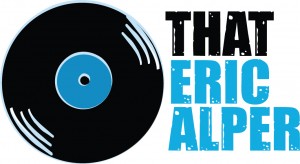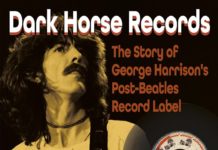(What’s the Story) Morning Glory? That’s all you need to say to conjure this generational anthem of an albun, and a rock and roll masterpiece. It transformed Oasis from indie darlings into stadium-filling superstars, defined Britpop, and gave us some of the most iconic songs of the ‘90s. But even if you’ve played Wonderwall a million times, here are five little-known facts that will change the way you hear this classic album forever.
1. The Recording Process Was Fueled by Chaos—And a Whole Lot of Guinness
Oasis recorded Morning Glory at Rockfield Studios in Wales, a peaceful countryside retreat… that quickly became anything but peaceful. Producer Owen Morris and Noel Gallagher worked at lightning speed, finishing one song per day. But while the sessions were productive, they were also chaotic—Liam Gallagher would often disappear for hours, only to return absolutely hammered. At one point, he and Noel had a massive fight that ended with Liam swinging a cricket bat at his brother’s head. Somehow, despite the mayhem (or maybe because of it), the album was completed in just 15 days.
2. “Some Might Say” Was the Last Stand for Oasis’ Original Drummer
Tony McCarroll, Oasis’ original drummer, played on Definitely Maybe, but by the time the band was ready to record Morning Glory, he was on his way out. The only track he appears on is Some Might Say, which was already in the works before Alan White took over on drums. McCarroll’s departure was far from amicable—Noel Gallagher later admitted that the band wanted someone with more technical skill, and McCarroll’s “barn door” style just wasn’t cutting it. His last contribution? A drum track recorded in a single take, as if he knew he was already out the door.
3. The Album Might Have Kicked Off the Loudness War
If you’ve ever thought Morning Glory sounds ridiculously loud, you’re not wrong. The album’s producer, Owen Morris, pioneered a heavy-handed compression technique known as “brickwalling,” making the music as loud as possible. This approach was so extreme that some music journalists credit the album with sparking the so-called “loudness war” in modern music, where albums keep getting louder and more compressed. Noel Gallagher later joked that Morning Glory is “probably the loudest album ever made”—and he might not be exaggerating.
4. “Champagne Supernova” Features a Secret Guest Guitarist
While Oasis were known for their Gallagher brothers rivalry, they were also great at collaborating with their heroes. One of the album’s most psychedelic and ambitious tracks, Champagne Supernova, features none other than Paul Weller of The Jam and The Style Council on lead guitar and backing vocals. Weller, a huge influence on Noel Gallagher, happened to be recording in the same studio and was invited to jam. His signature style gives the track its swirling, dreamy sound—so next time you hear it, remember that’s the Modfather shredding alongside Noel.
5. The Album Cover Has a Hidden Detail Most Fans Miss
The Morning Glory album cover, showing two men passing each other on Berwick Street in London, looks like a straightforward shot—but there’s a sneaky Easter egg hidden in the background. If you look closely, you’ll see producer Owen Morris standing on the sidewalk, holding the album’s master tape in front of his face. The cover itself cost an eye-watering £25,000 to shoot, and Noel Gallagher later admitted he wasn’t paying enough attention during the process. “I just wanted to make music, man,” he later said. “If I’d known people would be staring at it for 30 years, I might’ve cared more!”
Whether it’s the behind-the-scenes mayhem, secret cameos, or production quirks that shaped its sound, one thing is clear: Nearly 30 years later, Oasis’ (What’s the Story) Morning Glory? still as loud, anthemic, and unforgettable as ever.







